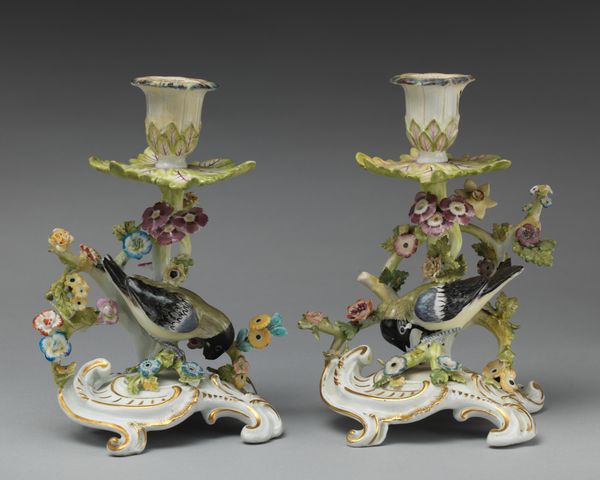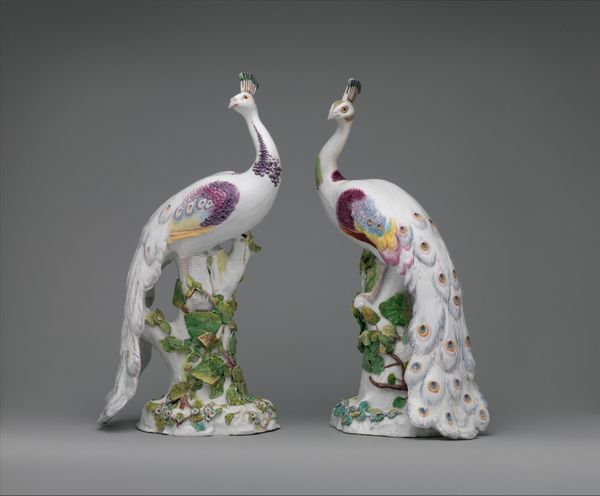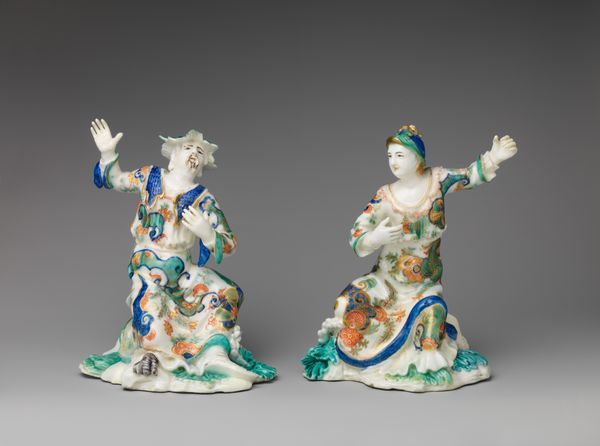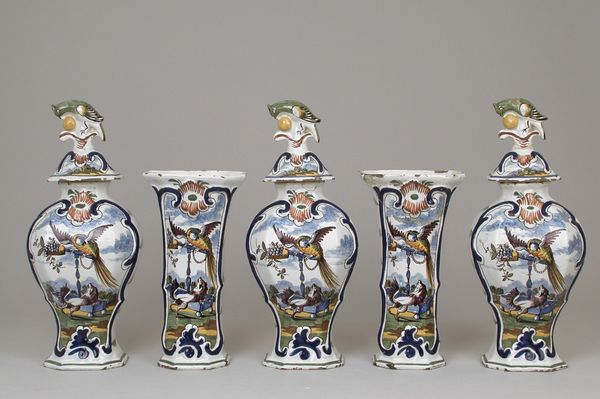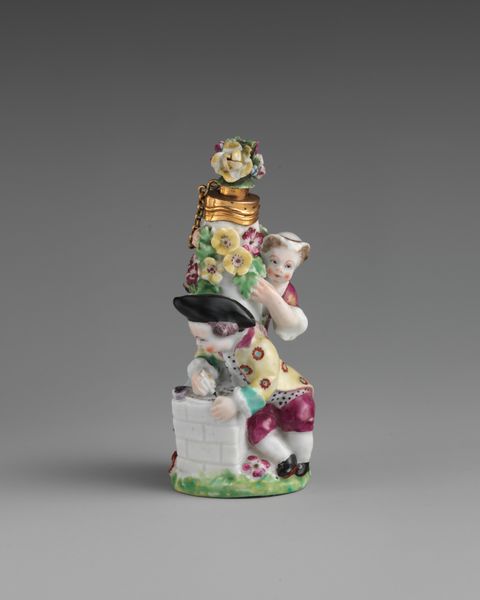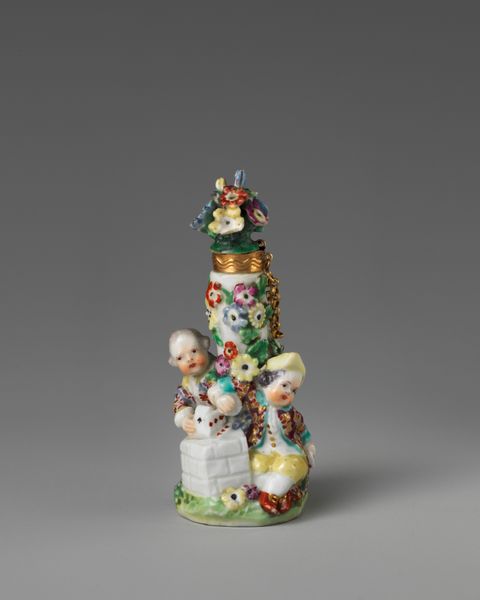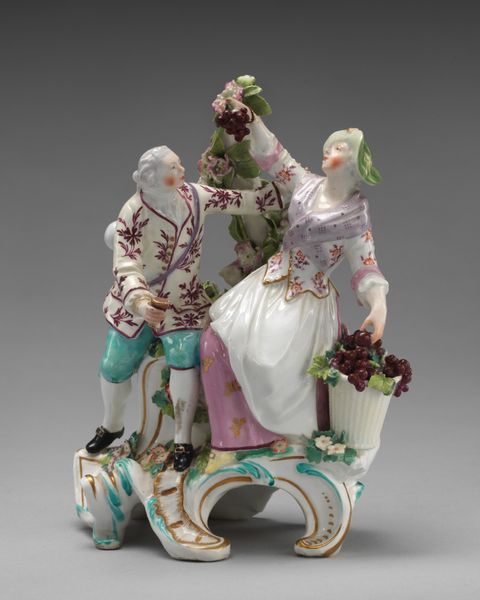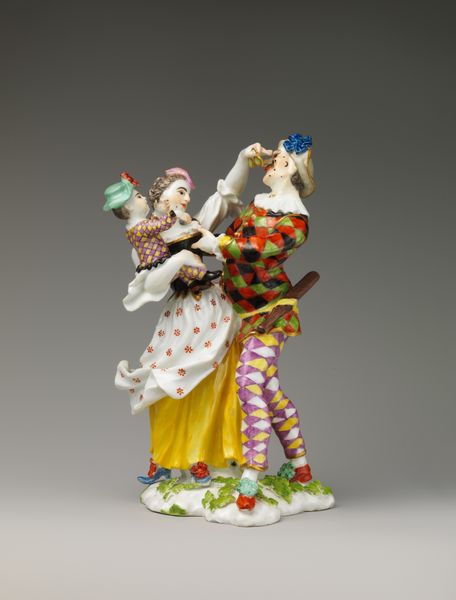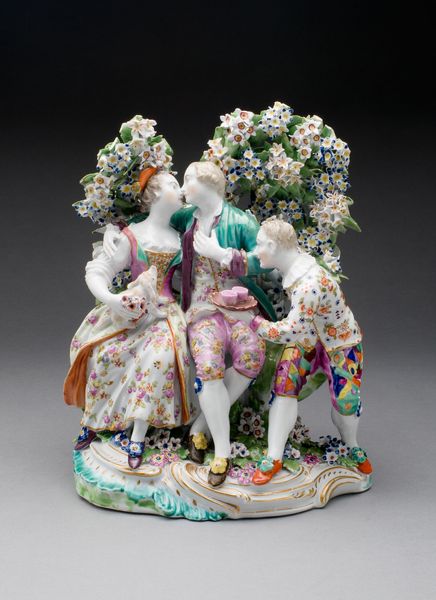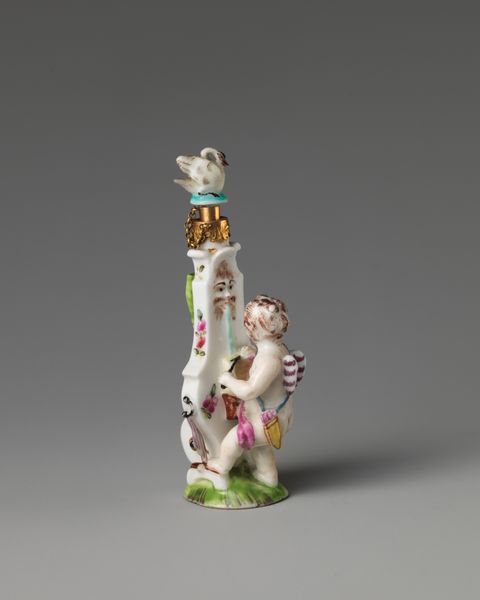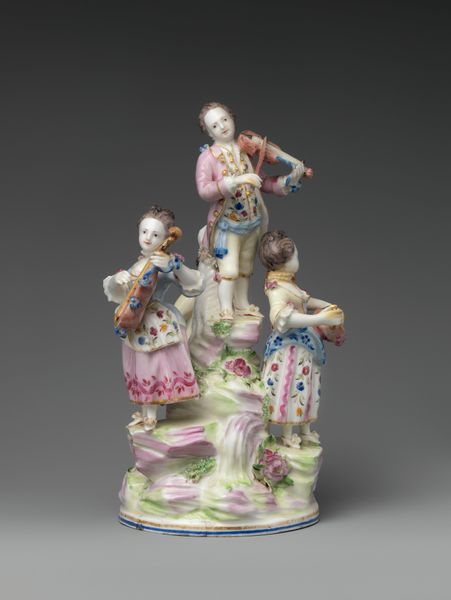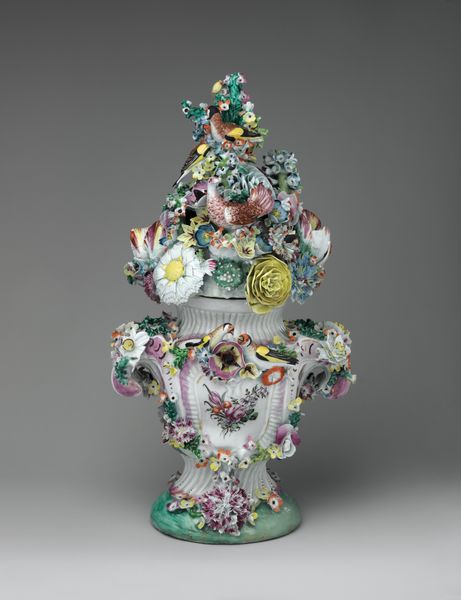
porcelain, sculpture
#
porcelain
#
figuration
#
sculpture
#
decorative-art
#
rococo
Dimensions: 6 13/16 × 6 7/8 in. (17.3 × 17.5 cm)
Copyright: Public Domain
Curator: These are a pair of candelabra, crafted from porcelain sometime between 1735 and 1745. Currently, they reside at the Metropolitan Museum of Art. Editor: Immediately, I am struck by their theatricality and lightness, typical of the Rococo. They look like figurines plucked straight from an opera set. There's something playful, even a bit decadent, about them. Curator: Decadence is a good word. Candelabra often served as symbols of wealth and refined taste. These are no exception. Look at the meticulous detail in the floral arrangements. They invoke themes of nature and pleasure. The two figures—one with a bagpipe, the other a type of lute, I think, convey notions of cultivated entertainment. Editor: I see that as a strategic invocation of pastoral themes—of simple, 'natural' pleasures. But considering the elite context for these objects, what societal forces were at play that necessitated these themes? Were they consumed ironically? Perhaps, their playful quality is itself a form of rebellion or escapism against the era’s strict social hierarchies? Curator: Escapism resonates here. The rise of porcelain manufactories provided elite patrons the perfect medium to shape ideal worlds. But also, let’s not forget the material itself. Porcelain was viewed as magical and precious—its creation seen as a transmutation of base materials into something rarefied. Alchemical undertones are hard to miss here. Editor: Precisely! And alchemical transformations weren't merely technical. They mirrored a desire for societal change, however subtly. I see how these forms, delicate as they appear, act as sites of social messaging, playing a significant, even provocative, role in shaping identity and political discourse. The placement of candlelight above those characters makes them actors—literally illuminating a moment to an audience, be it personal or in larger, social context. Curator: Agreed. Holding onto these various contextual meanings enhances their emotional impact for viewers, even today. They are intricate tapestries that merge visual pleasure, alchemical mystery, and a critical message about self, social spaces, and the broader cosmos. Editor: What strikes me is the continuity of how, even now, these objects perform certain ideological functions within cultural spaces like a museum. They remain, quite literally, luminaries.
Comments
No comments
Be the first to comment and join the conversation on the ultimate creative platform.
